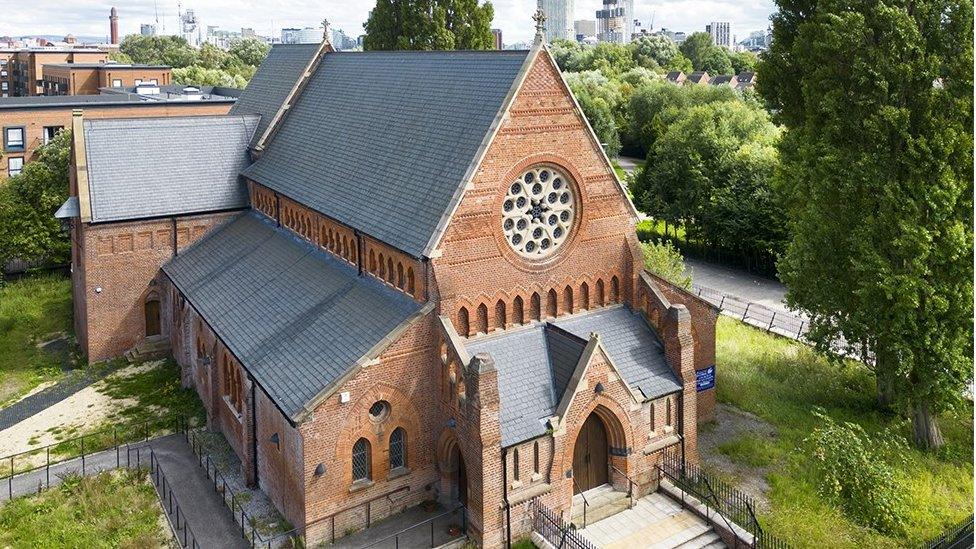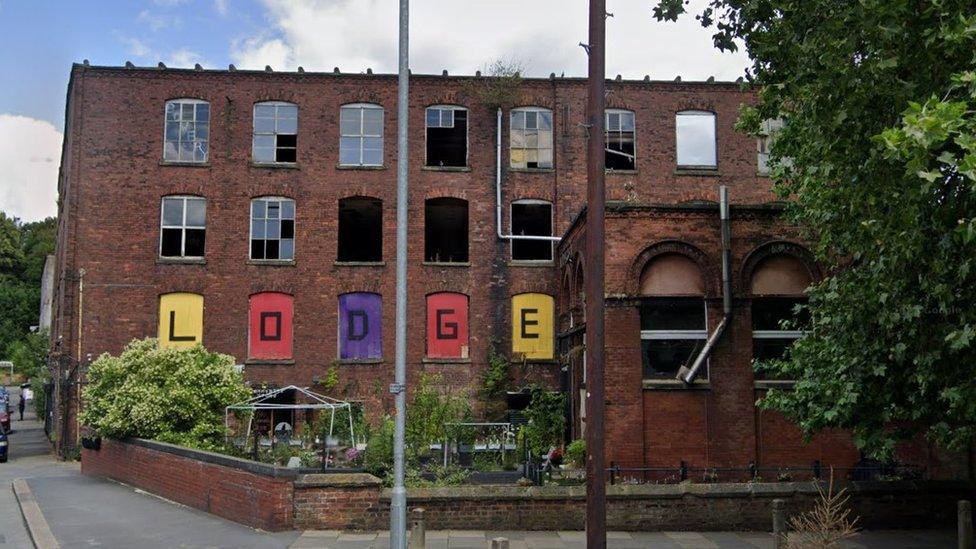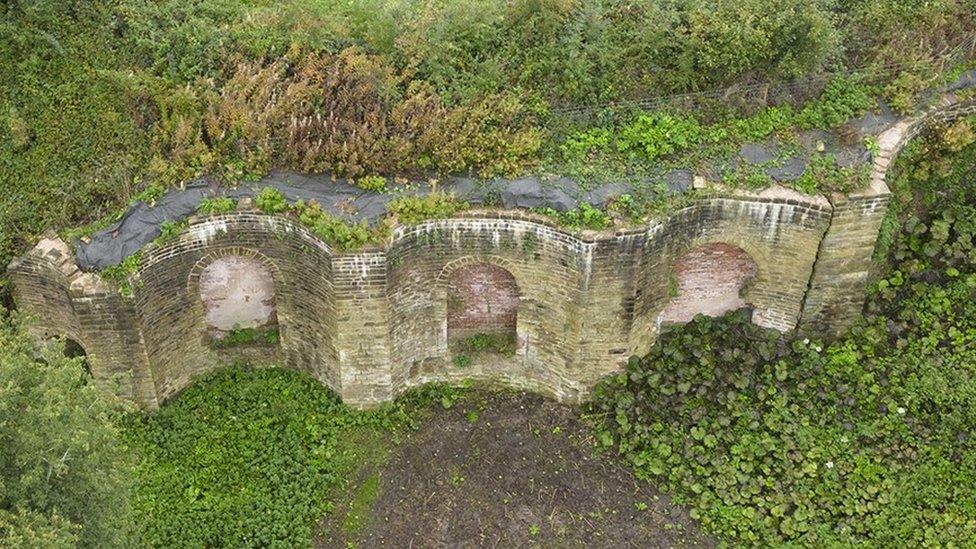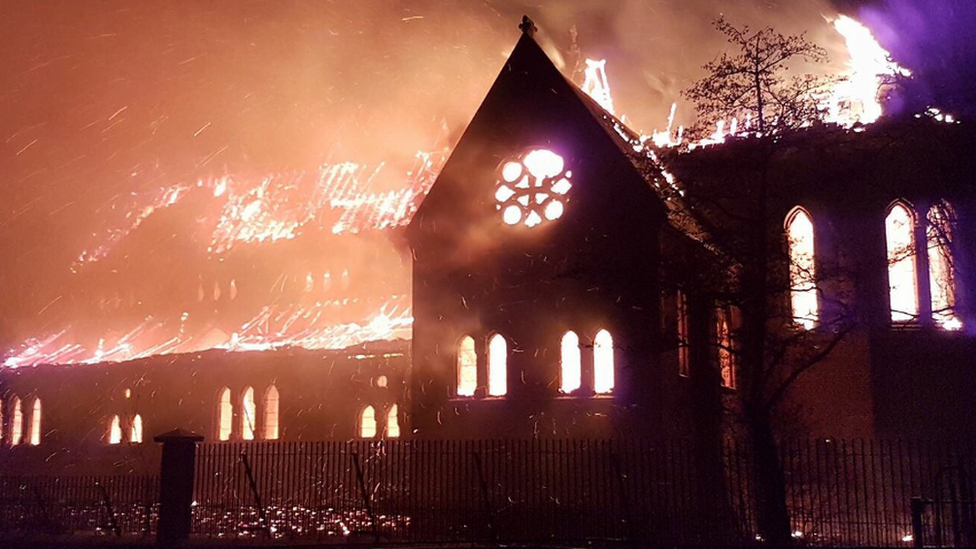Salford church hit by fire taken off Historic England at-risk list
- Published

The Church of the Ascension in Salford has been totally restored after a blaze in 2017
A church which was gutted by a fire has been taken off a list of at-risk heritage sites after being restored.
Salford's Church of the Ascension was first added to Historic England's Heritage at Risk Register three years before the 2017 blaze.
Lime kilns in Marple have also been removed from the list after a decade.
However, Middleton Conservation Area, which includes the Grade I listed St Leonard's Church and Lodge Mill, has been added to the register.
The heritage body said the area had seen some loss of historical character, especially on Long Street and Market Place, and also had a number of vacant buildings, including the Grade II listed Providence Chapel.
It said road alterations in the 20th Century had made it more difficult for people to walk across the area easily, which has led to areas like Market Place not reaching their full potential.

Middleton Conservation Area includes the Grade I listed St Leonard's Church and Lodge Mill
Rochdale Borough Council, in collaboration with the National Lottery Heritage Fund, has restored a number of historic buildings in Middleton, including the Long Street Methodist Church, and the authority has further plans to rejuvenate the area.
Historic England said it was providing a £35,000 grant to support work exploring how some of the other buildings can be brought back into use.
The Salford church, which dates from 1869, was added to the register in 2014 and saw repairs to its roof and walls a year later.
However, a fire in February 2017 reduced the building to a shell.
The heritage body said that since then, the efforts of the church and the community and the expertise of their professional team and insurers had resulted in the total restoration of the building.

The lime kilns were named after industrialist and cotton manufacturer Samuel Oldknow
The 225-year-old Oldknow's lime kilns, in Strines Road, Marple, had been on the register for more than a decade due to general neglect and loose masonry.
Named after industrialist and cotton manufacturer Samuel Oldknow, they were used to burn High Peak limestone that was delivered on barges from the Peak Forest Canal.
They have now been restored thanks to the efforts of the Friends of Oldknow's Lime Kilns, a grant of more than £90,000 from Historic England, and match funding from Stockport Council and the Association for Industrial Archaeology.

Why not follow BBC North West on Facebook, external, X, external and Instagram, external? You can also send story ideas to northwest.newsonline@bbc.co.uk
Related topics
- Published19 February 2017
